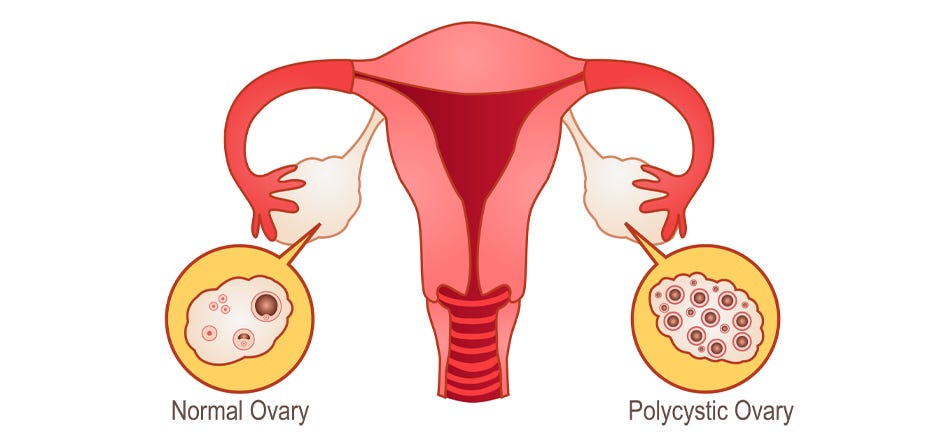Polycystic Ovary Syndrome; What is it and how to manage its symptoms?
Are you suffering from irregular periods, excessive hair growth and weight gain?
These are some of the signs of Polycystic Ovary Syndrome (PCOS), a condition which affects 1 in 10 women in the reproductive age. PCOS can cause a hormonal imbalance, leading to increased production of male sex hormones such as testosterone which are normally only found in small amounts in females.
Some women can develop numerous small cysts (fluid-filled sacs) in the ovaries, which is why it is referred to as polycystic ovary syndrome. PCOS causes a reduction or sometimes a lack of production of luteinizing hormone which is needed for ovulation. Whenever ovulation does not occur, small cysts may develop in the ovaries. These cysts then secrete more androgens leading to an increased levels of testosterone in the body. This hormonal imbalance is what is responsible for your wide range of symptoms including disruption of the menstrual cycle which can lead to difficulty in conceiving.
What are some of the symptoms of PCOS?
The symptoms of PCOS may include:
● Irregular periods
● Excess body hair, including the face, chest and upper back (hirsutism)
● Weight gain
● Oily skin/ Acne
● Male-pattern baldness or thinning hair
● Infertility
● Dark or thick skin patches on the back of the neck, in the armpits, and under the breasts
How is a diagnosis of PCOS made?
In order to form a diagnosis of PCOS, it is recommended to use the Rotterdam criteria. According to which, a clinical diagnosis of PCOS requires that a patient present with two or more of the following symptoms:
● Irregular periods (oligoovulation or anovulation)
● Increased testosterone levels which are clinically depicted by signs such as hirsutism or biological signs such as raised free testosterone levels.
● Polycystic ovaries that are visible on ultrasound
To begin with, your doctor will ask you about your medical history and whether you experienced some of the symptoms mentioned above.
A complete physical exam will be performed to check your signs and symptoms.
An ultrasound will be done to visualize the ovaries and uterus and check for cysts or follicles.
Blood tests will be performed to check for levels of androgens as well as your glucose, cholesterol and triglycerides to assess the risk of complications such as diabetes or heart conditions.
How is PCOS treated?
The most important thing one can do to treat PCOS is by making lifestyle changes - adopting a healthy diet and exercising are key.
A healthy diet and increased physical activity will lead to weight loss and this can improve symptoms. It can also lead to increased insulin utilization and therefore bring down blood glucose levels which may help you ovulate.
Birth control pills have also been at the forefront of PCOS management. These help to regulate menstrual cycles, lower androgen levels, and reduce acne.
Diabetes medication such as Metformin is used to lower insulin resistance in PCOS and consequently lower blood sugar levels, leading to weight loss and regulation of ovulation.
In order to get rid of excess hair, laser hair removal and electrolysis are common solutions to manage hirsutism. Some prescription medications can also target androgens and reduce hair growth.
Visit your gynecologist if you think your are suffering from PCOS.
It is recommended for you to see your doctor if you have irregular periods, or if you have other PCOS symptoms like excessive hair growth on your face or body. You should also see a doctor if you have been trying to get pregnant for 12 months or more without success.
If you have been diagnosed with PCOS, you should have regular testing and checkups done to assess your risk for possible complications
.





